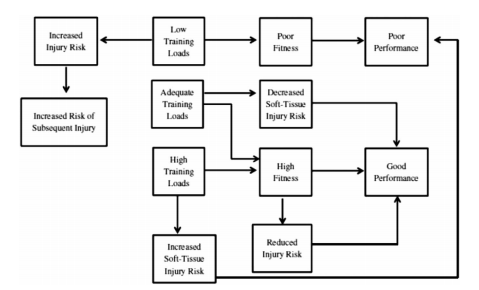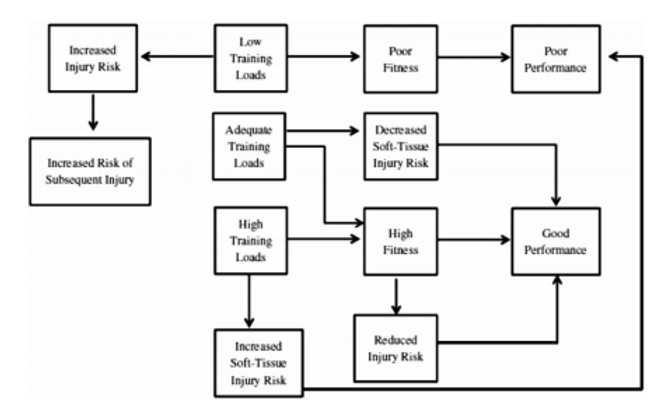
How should we jump back into training when your gym, court or field opens again?
We have been “shut down” and “sheltered” for a while now and we are all chomping at the bit to get out, get fit and get back to our sports. However, moderating our training volume is incredibly important – especially if we have any amount of deconditioning from being away from our sport.
As human beings, our body can only handle so much volume of a given movement before we start to break down. However, what’s cool about being a human being is that we’re adaptable and can build our body’s ability to handle additional training stress. We’ll refer to this as our “capacity”.
Having a higher capacity is beneficial from an injury prevention standpoint. This simply means that the more an athlete is prepared for a given activity, the less likely they will get hurt in that activity.
So how do we begin to train and build our capacity and tolerance?
So, from an injury prevention standpoint we certainly want to build capacity. However, there’s a challenge, we know that if we have any spikes in our training volume (a quick rise in training volume compared to what we’re used to performing) we are more likely to get injured. So, the goal becomes training in a slow and progressive manner to allow our bodies to fully adapt without succumbing to injury.
In general, we want to make sure we slowly progress our:
Exposure to end-range positions (deep squats, bottom of dips, overhead positions) with training
Exposure to specific movements (volume of pressing/pulling exercise, long-distance running, sprinting, high speed or power overhead motions/throwing/tennis services, etc.)
We can also build additional capacity by adding in accessory work for muscle groups that are being stressed greatly in training:
Additional Achilles tendon loading and gastroc/soleus strength work in runners
Isolated rotator cuff strength work for overhead athletes
Lower back and trunk strengthening for powerlifters
Single leg strength work for Olympic style or hybrid lifters
We also want to make sure we avoid large training spikes.
Time Gabbet is a researcher who has been studying what variables in our training lead to soft tissue injuries.
Tim’s research is mostly in contact sports - mainly with Rugby and Soccer players – but a lot of his research and concepts about why people are getting injured line up completely with injuries I end up seeing in the clinic with all athletes.
His work primarily researches training load and its relationship to injury. It’s no secret that increasing your overall training load will generally lead to increased performance. The caveat is that as an athlete we’re constantly treading the fine line between maximizing training for performance and falling off the edge and getting hurt or sick.
Looking through Tim’s studies, a few concepts become apparent when comparing normal training volumes:
Injury Risk can be increased with:
Excessive or rapid increases in training loads
Over-training and/or under-training
Injury Risk can be decreased with:
High chronic workloads over time – maintaining high-level, quality workout over a longer time frame
Physically hard (but appropriate) training develops physical qualities, which in turn protect again injuries.
Basically, if you do not prepare your body for your given activity over a longer period of time you are more likely to get injured.
The flow chart below is from Tim’s paper in British Journal of Sport Medicine in 2015. It summarizes the correlation between high to low training loads and how they can be correlated with injury risk and performance/fitness.

Gabbett, Tim. (2016). The training-injury prevention paradox: Should athletes be training smarter and harder?. British journal of sports medicine. 50. 10.1136/bjsports-2015-095788.
Simply Put...
We are not sure what the optimal workloads are or what the optimal change in workload is at this point. However, if you follow the adages that “slow and steady wins the race” and “consistency is key” then you will likely put yourself in a position to succeed without increasing your likelihood of injury while still improving performance.
-1.png?width=129&height=50&name=Untitled%20design%20(24)-1.png)

Leave Your Comment
Many desktop publish packages web page editors now use model text
search for sites their infancy.